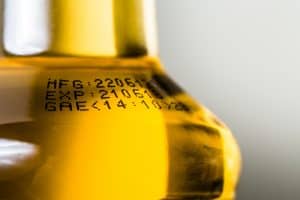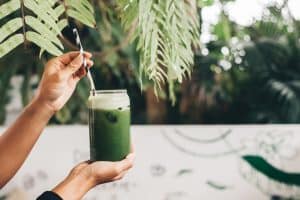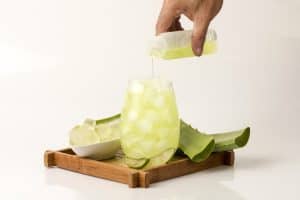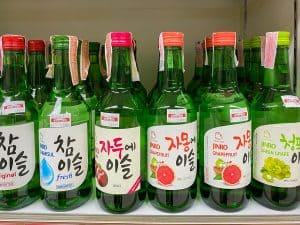
Did you know that Vietnam is the world’s second-largest producer of coffee? Since the French introduced coffee to Vietnam, they’ve made it their own.
But why is Vietnamese coffee so unique? If you know anything about coffee, you’ve probably heard about two varieties of coffee: Arabica and Robusta.
Arabica coffee, the most popular type, is sweeter and lighter with a fruity taste. Robusta, on the other hand, has a stronger, harsher taste. In essence, Robusta has more caffeine, and Vietnamese coffee uses Robusta beans.
If you want to learn to brew and drink Vietnamese coffee, you’ve come to the right place. So how do you drink Vietnamese coffee?
After brewing the coffee with a phin, French press, espresso machine, or Moka pot, you can enjoy your coffee with yogurt, eggs or make a coffee smoothie.
Continue reading to learn about the different ways to prepare and enjoy Vietnamese coffee.
How To Make Vietnamese Coffee
Below are some ways to make Vietnamese coffee at home.
The Phin Method
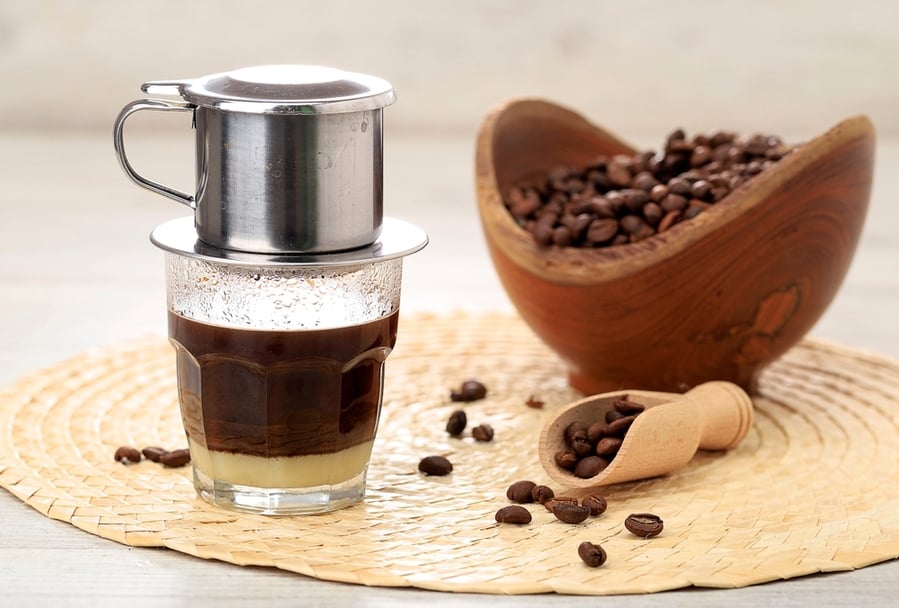
A phin is a filter with a perforated base and brewing chamber that holds water for a cup of coffee. The phin is a traditional device used to brew Vietnamese coffee, so if you don’t already have one, you’ll need it for this method.
Brewing coffee with a phin is extremely easy, and once you’ve done it a few times, it’ll become second nature. First, pour some condensed milk into a mug, then put the phin over it.
Add two tablespoons of your Vietnamese coffee into the phin and press the disk over the coffee. If you’re grinding the coffee, try not to grind it finer than medium because it’ll fall through the holes of the phin.
Next, pour a bit of hot water into the phin and wait five minutes. Yes, five minutes. Now, most people would tell you to wait for only a few seconds, but that’s not enough time for the coffee to expand and release its flavor.
The process of waiting is known as blooming, giving the coffee time to release carbon dioxide and flavor. After that, fill the phin with hot water and wait.
There’s no saying how long you’ll be waiting because the coffee will drip into the mug. Try going for a run, stretching, or doing something productive while you wait.
After you’ve gotten every last drop of your Vietnamese coffee in your mug, stir and drink. But if it’s too strong, you can add another round of water to the phin.
You’re not using paper for anything so brewing Vietnamese coffee with a phin is easy, safe, easy to clean, and eco-friendly. It’s an excellent addition to your morning routine.
French Press Method

A French press is a brewing device that uses pressure to force coffee to the bottom of the coffee press after brewing. It captures the flavor of the coffee in one of the easiest ways possible.
First, preheat the coffee press and coffee mug. This is to ensure they maintain their temperature and produce better-tasting coffee. By preheating, I mean adding some hot water to both containers.
Next, grind your Robusta beans if you don’t already have a powder to work with. Remember to grind the beans to a coarse or medium coarse texture.
Measure a few spoons of your ground coffee (1 tablespoon per 118 ml. of water) and start boiling your coffee-making water. After the water has come to a full boil, let it sit for about 30 seconds.
Empty the warming water from the mug and french press. Then add your measured ground coffee to the press and pour hot water.
After adding the hot water to the French press, stir to get the most out of your coffee. Place the lid on the French press and wait 5 minutes to let the coffee bloom.
Afterward, slowly press the plunger into the press and pour your coffee into the mug. You should get a fine, clear cup of coffee.
The Espresso Method

Needless to say, you need an espresso machine for this step. Fill the machine with water and get your coffee.
Weigh your coffee before putting it in the espresso. For a double shot, 18 grams is perfect.
Again, you need to be careful when grinding coffee, too coarse, and the coffee is going to suck. Now, using a tamper, press the ground coffee in the basket to level it out (the basket is a small container with holes in the portafilter).
Take your portafilter, filled with tamped-down coffee, and attach it to the group head, turn on the machine and wait about 30 seconds. Try alternating the texture and amount of your coffee and the espresso timer to find the perfect process for you.
The Moka Pot Method
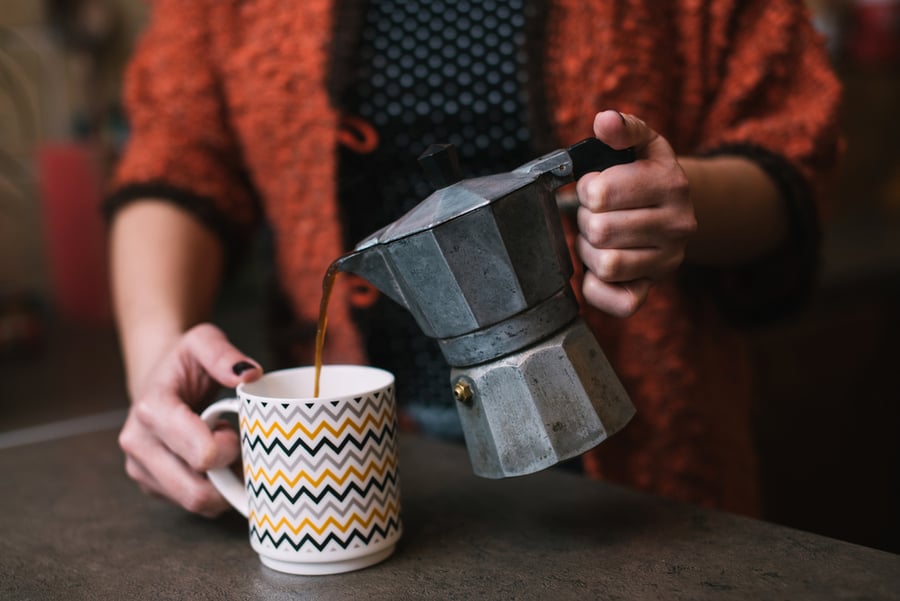
A Moka pot does not make coffee as strong as espresso does, but the coffee it makes is usually more concentrated than regular drip coffee. It produces rich flavored coffee that beats the phin and french press when it comes to caffeine.
Grind the coffee a bit coarser than you would for an espresso and fill the coffee funnel tank with coffee but don’t tamp it down. Keep the kettle nice and clean because having stale coffee in it will make your coffee bitter.
Fill the boiler with water, put the coffee funnel tank on top, and place the kettle. In other words, arrange the Moka pot like you normally would and put it on the burner.
The water at the bottom will start to evaporate, but it’s trapped, so it’ll build up pressure that’ll brew the coffee and push it through to the kettle.
Once the coffee starts flowing, wait until you hear a gurgling sound, then cool it (run it under cold water) and pour your coffee.
Final Thoughts
After brewing your coffee, you can add it to your morning yogurt and enjoy. Or whisk one egg yolk until it becomes thick, add it to some condensed milk and pour the mixture into your coffee to make Vietnamese egg coffee.
Lastly, you can make a coffee smoothie by mixing fruits like bananas, strawberries, and avocados and blending them with your brewed coffee.



